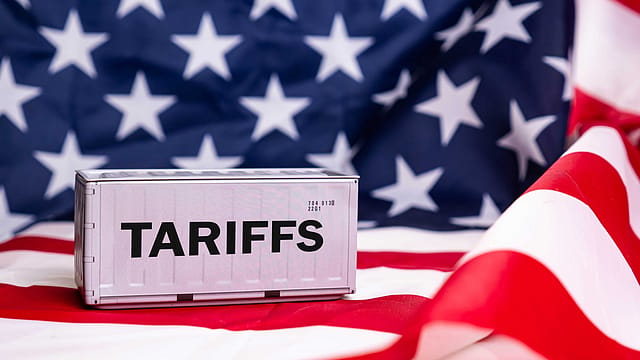Indian economy resilient, export competitiveness strengthening: industry bodies react to U.S. tariffs
ADVERTISEMENT

The Indian economy continues to demonstrate resilience and strength amid global headwinds, including the 50% punitive tariffs imposed by the U.S. that came into effect on Wednesday, FICCI President Harsha Vardhan Agarwal said in a statement.
According to Agarwal, the resilience is underpinned by a large and vibrant consumer base, robust macroeconomic fundamentals, continued economic reforms and enterprising businesses. “The proposed next-generation GST reforms announced by the Hon’ble Prime Minister will give a further boost to India’s growth,” Agarwal added.
Hemant Jain, President, PHDCCI, stated that in response to the tariffs imposed by Donald Trump, President of the United States, the government has developed a comprehensive, multidimensional strategic framework designed to mitigate the adverse economic impacts. At the same time, the framework will also strengthen the nation’s export competitiveness.
“Central to this response is the establishment of a substantial ₹25,000 crore financial support mechanism under the Export Promotion Mission (EPM), structured across six financial years spanning 2025-2031,” his statement added. This strategic initiative, according to Jain, is specifically designed to provide enhanced access to affordable credit facilities, facilitate improved market penetration opportunities, and create a robust buffer mechanism to insulate Indian exporters from the deleterious effects of the tariff regime.
January 2026
Netflix, which has been in India for a decade, has successfully struck a balance between high-class premium content and pricing that attracts a range of customers. Find out how the U.S. streaming giant evolved in India, plus an exclusive interview with CEO Ted Sarandos. Also read about the Best Investments for 2026, and how rising growth and easing inflation will come in handy for finance minister Nirmala Sitharaman as she prepares Budget 2026.
Earlier, Sanjay Nayar, President of Assocham, expressed confidence in the Indian industry’s ability to weather the tariff storm, as he believes the Indian industry has always thrived under pressure.
“The 50% tariff is undoubtedly a challenge…our businesses have a proven track record of adapting quickly, innovating and expanding into new frontiers,” said Nayar in a statement. Sectors such as textiles, gemstones, jewellery, agriculture, and shrimps—which are bearing the brunt of the 50% tariffs—have ramped up efforts to accelerate diversification into Africa, Latin America, Europe, and ASEAN, while strengthening competitiveness domestically, according to Nayar.
Manish Singhal, Secretary General of Assocham, stated that the U.S. tariff regime is not just a challenge but also an opportunity for India to strengthen its role as a resilient and future-ready trading partner. “By deepening partnerships with developed economies, diversifying markets, and advancing bold reforms, we are building a competitive and trusted economic ecosystem,” he added.
These comments come at a time when the imposed tariffs are set to impact sectors such as textiles, gemstones, jewellery, and agriculture, as well as MSMEs, the most. According to ratings agency Crisil, textiles, gems, jewellery, and seafood industries account for about 25% of India’s total exports to the U.S.
In the gems and jewellery sector, MSMEs in Surat hold a dominant position in diamond exports, accounting for over 80% of the market share. “Diamonds account for over half of the country’s gems and jewellery exports, and the U.S. is a major consumer of Indian diamonds, comprising nearly a third of exports,” Crisil said.
Meanwhile, the Delhi-based think tank Global Trade Research Initiative (GTRI) has suggested introducing targeted credit lines for shrimp, apparel, jewellery, handicrafts, carpets, and other highly impacted industries to prevent mass layoffs and closures. It also called for temporary enhancement of export incentive schemes to support liquidity, while introducing wage-support programmes for workers in key hubs like Tiruppur, Surat, Bhadohi, and Jodhpur to cushion employment losses.
GTRI also advocated for market diversification and urged the government to lead sector-specific trade missions to alternative markets for shrimp, apparel, jewellery, and handicrafts.
